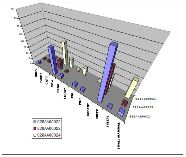
Figure 27: Simple plot of species, identified animal bones from the Grubenhäuser by frequency.
Each of the Grubenhäuser contained a large faunal assemblage. Preliminary identification as to bone and species has been undertaken on the complete, or substantially complete, bones/teeth; these represent about 10% of the bone assemblage from each feature. The remaining 90% are fragments, which may benefit from further study; however, this is unlikely to change the overall picture. The species range is similar to that found at West Heslerton with the addition of a high frequency of frog bones, emphasising the proximity of this site to the wetlands to the north (Fig. 27). The assemblage in 028AA0023 was roughly half the size of that from either of the other two structures, but the feature was also smaller. The dominant species present are sheep/goat, followed by cattle. Given the secondary and tertiary nature of much of the material deposited in Grubenhäuser, the assemblage as it stands is too small to be worthy of detailed analysis in isolation. Should further excavation be undertaken on this site, the evidence recovered from these features will contribute towards a wider analysis.
© Internet Archaeology/Author(s)
URL: http://intarch.ac.uk/journal/issue27/2/4.3.1.1.html
Last updated: Wed Nov 11 2009